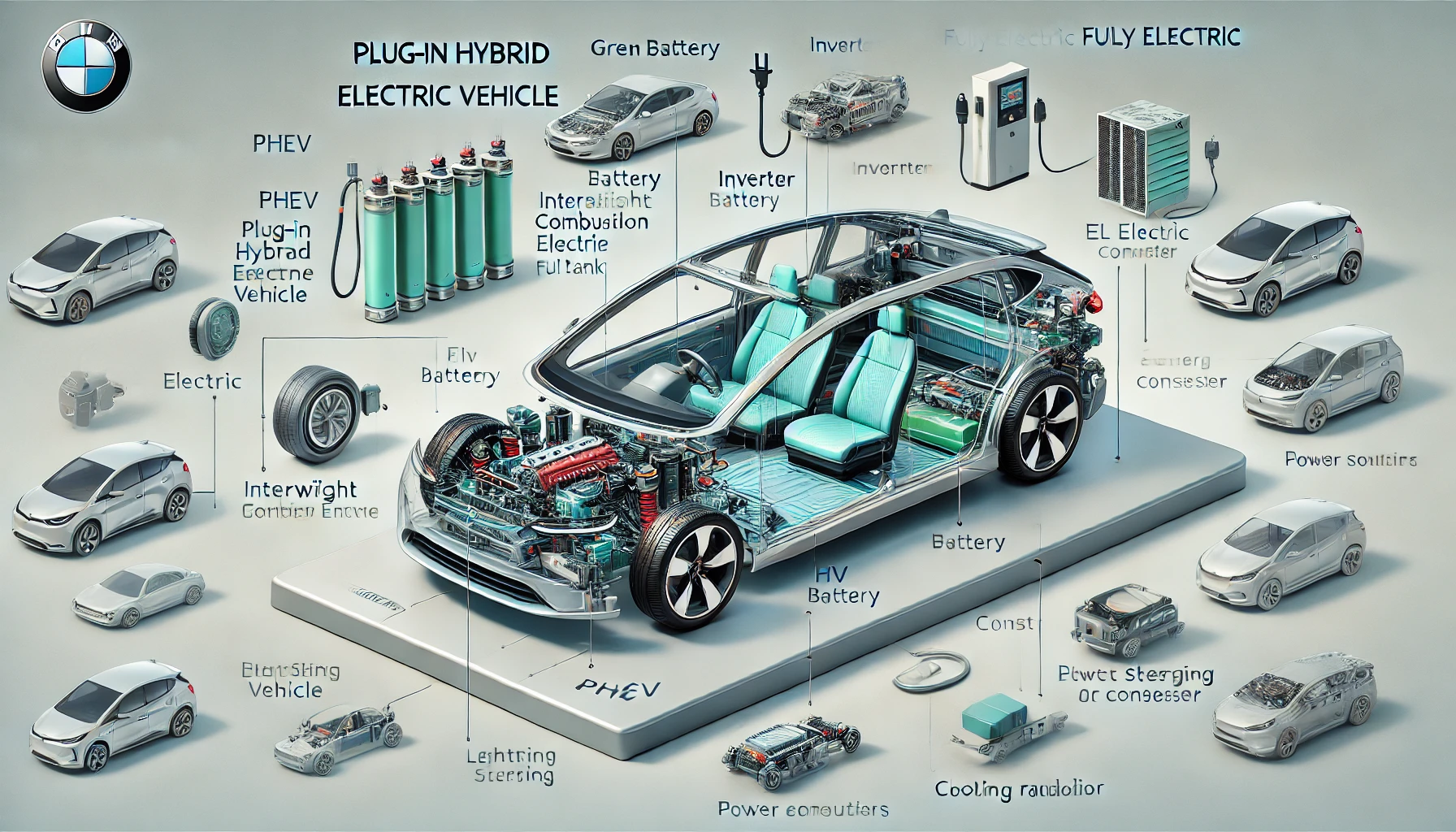🔌 Plug-in Hybrid vs. Fully Electric Cars: A Technical Comparison
Electric mobility is reshaping the automotive industry, offering sustainable alternatives to traditional internal combustion engines. Two of the most prominent technologies are the Plug-in Hybrid Electric Vehicle (PHEV) and the Battery Electric Vehicle (BEV). While both reduce emissions and rely on electric power, they use distinct architectures and serve different user needs. In this post, we’ll break down the engineering behind each system, using a clear, labeled infographic to explore their main components. ⚡ 1️⃣ Plug-in Hybrid Electric Vehicle (PHEV) A PHEV combines the best of both worlds: an internal combustion engine (ICE) and an electric drivetrain with a rechargeable battery pack. This configuration allows short-distance electric driving while retaining the flexibility of a gasoline engine for longer trips. 🔍 Key Components: Battery (High-Capacity): Positioned at the rear, stores energy for electric-only driving. Typically smaller than a BEV’s battery. Fuel Storage (Gas Tank): Supports long-range travel without charging. Internal Combustion…





